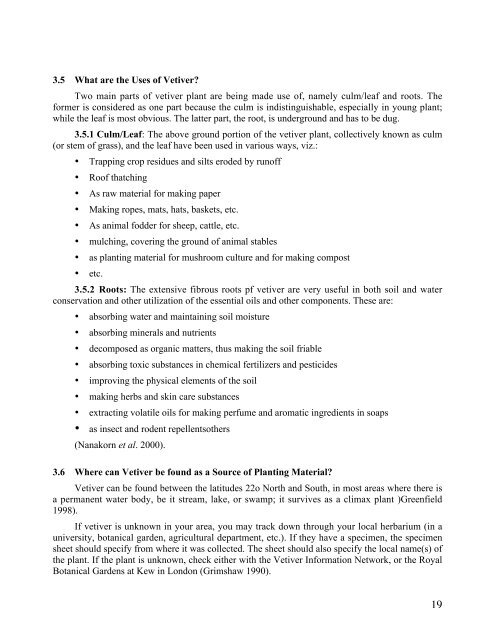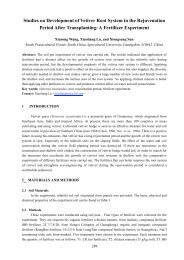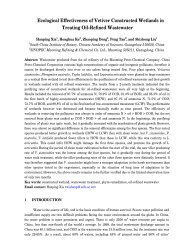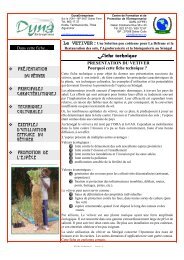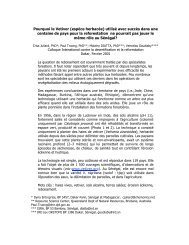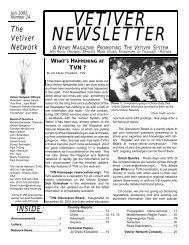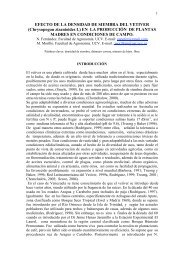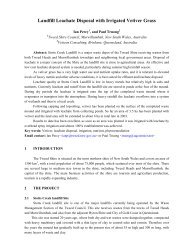Training manual - The Vetiver Network International
Training manual - The Vetiver Network International
Training manual - The Vetiver Network International
Create successful ePaper yourself
Turn your PDF publications into a flip-book with our unique Google optimized e-Paper software.
3.5 What are the Uses of <strong>Vetiver</strong>?<br />
Two main parts of vetiver plant are being made use of, namely culm/leaf and roots. <strong>The</strong><br />
former is considered as one part because the culm is indistinguishable, especially in young plant;<br />
while the leaf is most obvious. <strong>The</strong> latter part, the root, is underground and has to be dug.<br />
3.5.1 Culm/Leaf: <strong>The</strong> above ground portion of the vetiver plant, collectively known as culm<br />
(or stem of grass), and the leaf have been used in various ways, viz.:<br />
• Trapping crop residues and silts eroded by runoff<br />
• Roof thatching<br />
• As raw material for making paper<br />
• Making ropes, mats, hats, baskets, etc.<br />
• As animal fodder for sheep, cattle, etc.<br />
• mulching, covering the ground of animal stables<br />
• as planting material for mushroom culture and for making compost<br />
• etc.<br />
3.5.2 Roots: <strong>The</strong> extensive fibrous roots pf vetiver are very useful in both soil and water<br />
conservation and other utilization of the essential oils and other components. <strong>The</strong>se are:<br />
• absorbing water and maintaining soil moisture<br />
• absorbing minerals and nutrients<br />
• decomposed as organic matters, thus making the soil friable<br />
• absorbing toxic substances in chemical fertilizers and pesticides<br />
• improving the physical elements of the soil<br />
• making herbs and skin care substances<br />
• extracting volatile oils for making perfume and aromatic ingredients in soaps<br />
• as insect and rodent repellentsothers<br />
(Nanakorn et al. 2000).<br />
3.6 Where can <strong>Vetiver</strong> be found as a Source of Planting Material?<br />
<strong>Vetiver</strong> can be found between the latitudes 22o North and South, in most areas where there is<br />
a permanent water body, be it stream, lake, or swamp; it survives as a climax plant )Greenfield<br />
1998).<br />
If vetiver is unknown in your area, you may track down through your local herbarium (in a<br />
university, botanical garden, agricultural department, etc.). If they have a specimen, the specimen<br />
sheet should specify from where it was collected. <strong>The</strong> sheet should also specify the local name(s) of<br />
the plant. If the plant is unknown, check either with the <strong>Vetiver</strong> Information <strong>Network</strong>, or the Royal<br />
Botanical Gardens at Kew in London (Grimshaw 1990).<br />
19


